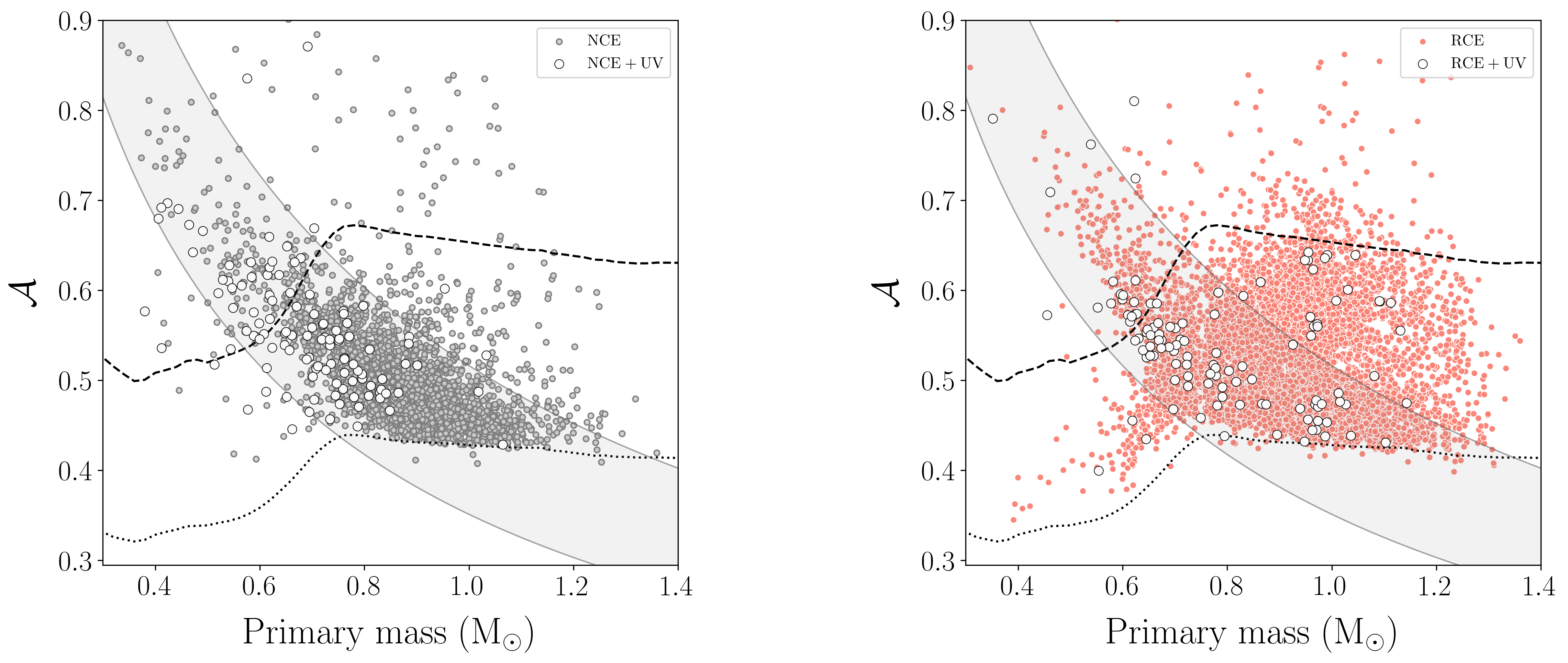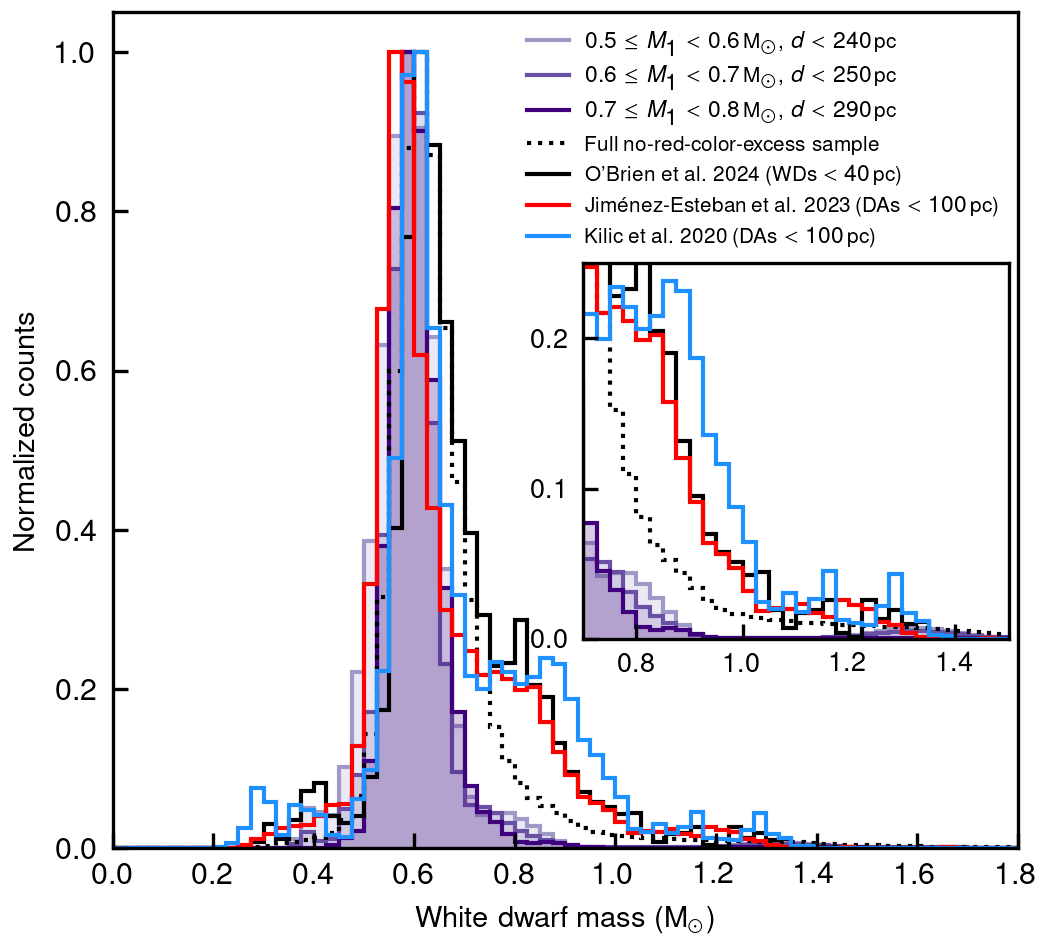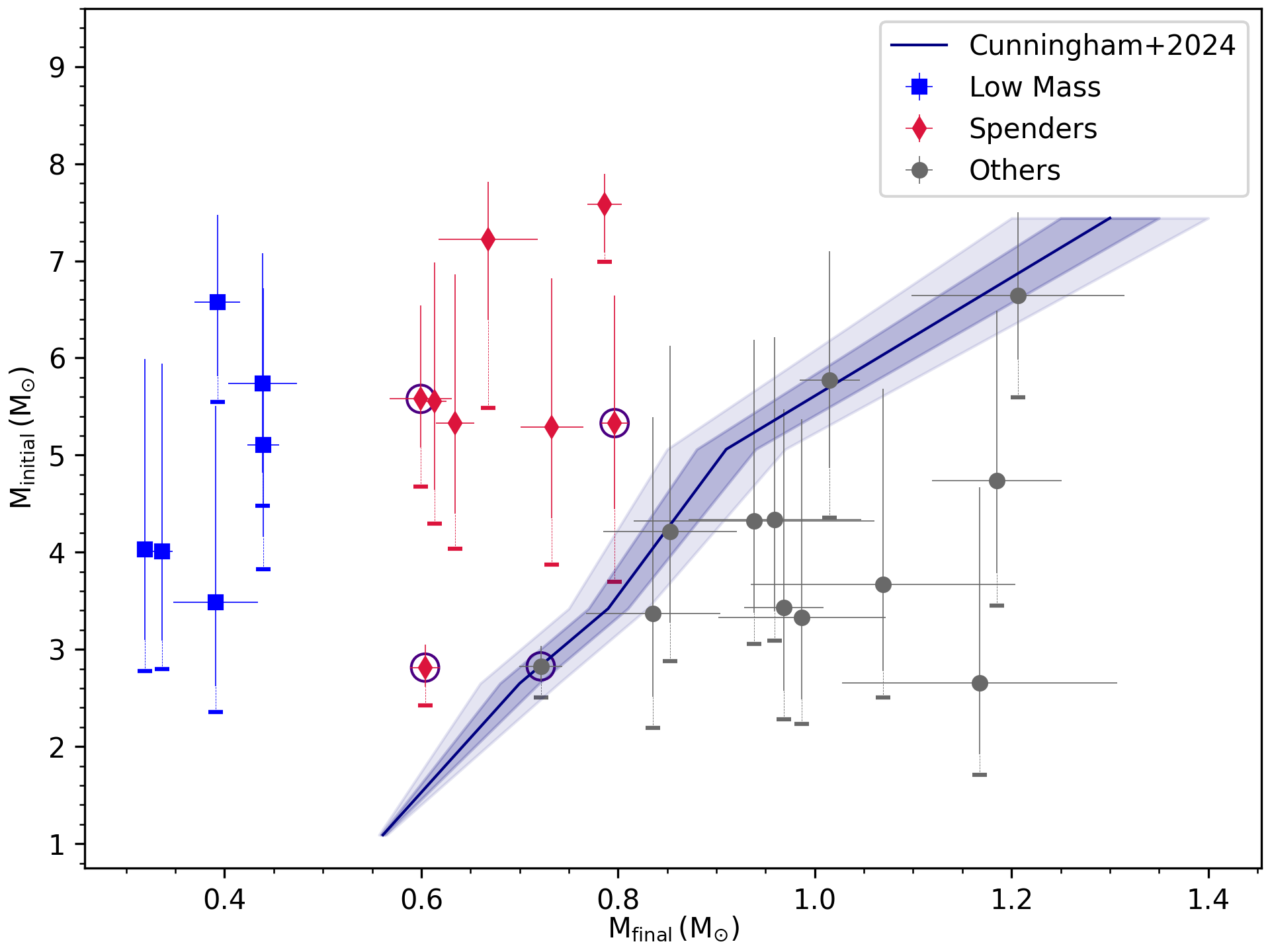Main-sequnece + white-dwarf binaries
The third data release of Gaia was the first to include a catalog of of unresolved sources with non-single star solutions.
We use this catalog to identify and study a unique population of main sequence (MS) + white dwarf (WD) astrometric binaries,
with orbital separations of about 1 astronomical unit (AU).

We apply the astrometric triage technique of Shahaf et al. 2019 to identify binary star systems with companions that are not single MS stars.
The study uncovered a population of nearly 3200 binaries, characterised by orbital separations on the order of an astronomical unit,
in which the faint astrometric companion is probably a WD.

We study the WD mass distribution of a volume-complete sample of binaries with K/M-dwarf primaries and orbital separations ~1AU.
We find that the number of massive WDs relative to the total number of WDs in these systems is smaller by an order of magnitude compared to their occurrence among single WDs in the field.

We examine the s-process element abundances of MS stars with WD companions at orbital separations ~1AU.
We find a distinct domain where enhanced s-process elemental abundances depend on both the WD mass and metallicity.
Our results form direct observational evidence of a connection between AGB masses and s-process yields.

We examine the applicability of the initial-to-final mass relation (IFMR) for WDs in intermediate-separation binary systems (~1 AU), using astrometric binaries identified in open clusters from Gaia DR3.
The results highlight significant deviations from the IFMR derived for isolated WDs, emphasizing the role of binary evolution.



